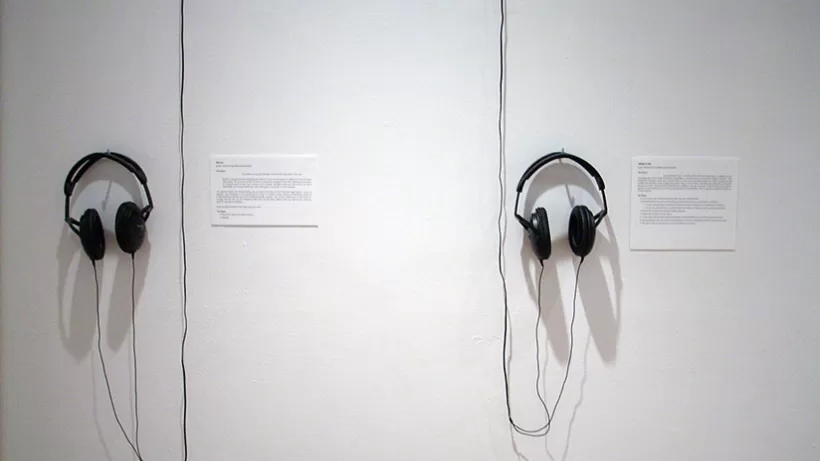There is an unfortunate sense of naturalness in the use of the screen as the main output device for computational experiments. It is common to divide generative art from generative music, but there is no real necessity for the distinction; the underlying structures and code may be almost identical. That is the case for this work, where the same randomly generated data simultaneously produced both visual and aural output based on sine waves. In this case only the sound is presented as a kind of protest against vision's primacy.
The generative form, of which 0502.2156 is an example, is defined by the expansiveness of its infinite productive capabilities: a system which can produce endless variation. That possibility is arrested here; the program was run only once, and the results have been preserved and marked with the time of their singular execution: May 2, 21:56 (2002). Yes there are rules here, but what is the game of this? The winning and the losing is undefined, the play, however, of the knowing of procedure against the not knowing of outcome produces a kind of fascination. But if a game is played only once, is it really a game.
The Rules
- Compose a ten minute long song made up only of sine waves.
- Divide the time into one constructing movement and one de-constructing movement.
- In the constructing movement double the number of waves in each subsequent phrase.
- In the de-constructing movement halve the number of waves in each subsequent phrase.
- Divide the movements into eight similar phrases.
- Divide the phrases into four bars.
- In each bar pick the parameters (frequency, phase, amplitude, etc.) of the waves at random.
- Move gradually from the previous parameters to the new parameters over the course of the bar.
- Play each wave in sequence for an equal fraction of the bar.
